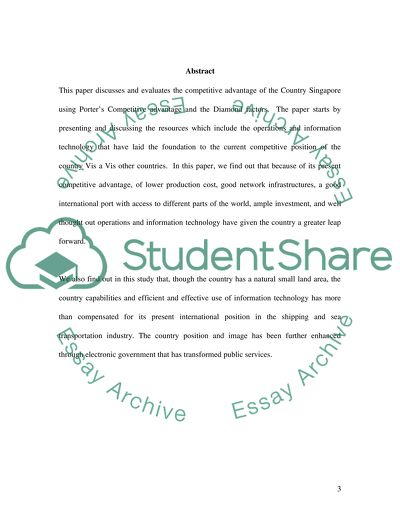Cite this document
(“The competitive advantage of the Country Singapore using Porter's Essay”, n.d.)
The competitive advantage of the Country Singapore using Porter's Essay. Retrieved from https://studentshare.org/miscellaneous/1522482-the-competitive-advantage-of-the-country-singapore-using-porters-competitive-advantage-and-the-diamond-factors
The competitive advantage of the Country Singapore using Porter's Essay. Retrieved from https://studentshare.org/miscellaneous/1522482-the-competitive-advantage-of-the-country-singapore-using-porters-competitive-advantage-and-the-diamond-factors
(The Competitive Advantage of the Country Singapore Using Porter'S Essay)
The Competitive Advantage of the Country Singapore Using Porter'S Essay. https://studentshare.org/miscellaneous/1522482-the-competitive-advantage-of-the-country-singapore-using-porters-competitive-advantage-and-the-diamond-factors.
The Competitive Advantage of the Country Singapore Using Porter'S Essay. https://studentshare.org/miscellaneous/1522482-the-competitive-advantage-of-the-country-singapore-using-porters-competitive-advantage-and-the-diamond-factors.
“The Competitive Advantage of the Country Singapore Using Porter'S Essay”, n.d. https://studentshare.org/miscellaneous/1522482-the-competitive-advantage-of-the-country-singapore-using-porters-competitive-advantage-and-the-diamond-factors.


